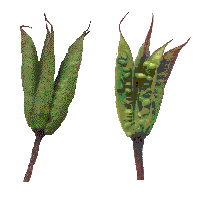
Aquilegia (Columbine). The seedpod is the same size as a ripe seedpod, but is still green and hard. The seeds inside are green and soft. The ripe pod is brown and dry, and ripe seeds are black and hard.

Eschscholzia (California Poppy). The seedpod is short, soft and green. The seeds inside are small, soft and green. A ripe seedpod is long, pale brown and dry, and ripe seeds are brown and hard.
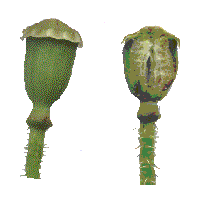
Papaver (Poppy). The seedpod is small and hard and has a rounded top. The seeds inside are tiny, whitish and soft. The ripe pod is brown and dry, with a flat top, and ripe seeds are brown and hard.
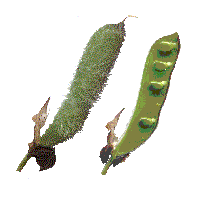
Lupinus (Lupin). The seedpod is small, soft and hairy, and the seeds inside are soft and green. A ripe seedpod is hard, dry and brown, and ripe seeds are brown or black and hard.
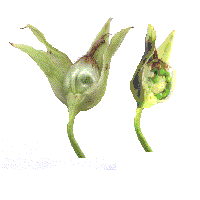
Primula (Primrose). The seedpod is a ball inside the calyx. The unripe pod is pale green, and the unripe seeds are green and soft. The ripe seedpod is whitish, and ripe seeds are black or brown and hard.

Lychnis (Ragged Robin). The seedpod is inside the calyx. The unripe pod is hard and green, and unripe seeds are white and soft. The ripe seedpod is light brown and hard and the calyx is dry and brown. Ripe seeds are black or brown and hard.
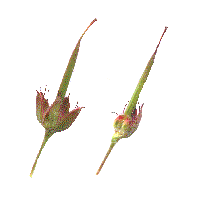
Geranium (Crane's Bill). The unripe seedpod is the same size as a ripe pod, but is green and soft, and the unripe seeds are green with a pinkish cover. The ripe seedpod is hard and dark brown, and ripe seeds are hard and brown.
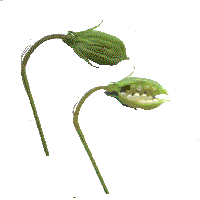
Viola (Violet). The seedpod is the same size as a ripe seedpod, but is green and hard, and the unripe seeds are white. The ripe pod is pale brown and ripe seeds are yellow, brown or black and hard.
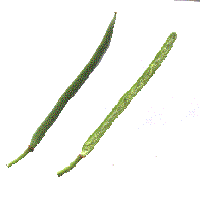
Erysimum (Wallflower). The seedpod is small and the seeds inside are tiny, green and soft. The ripe pod is light brown and dry, and ripe seeds are yellow or light brown and hard.
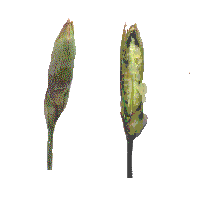
Dianthus (Pink). The seedpod is almost the same size as a ripe seedpod, but is still green and hard. The seeds inside are green and soft. The ripe pod is brown and dry, and ripe seeds are black, flat and hard.
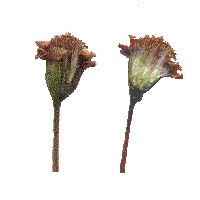
Senecio (type of Daisy). There is no seedpod, but the embryo seeds under the dead flower petals are small, soft and green. The ripe seeds have a fluffy parachute, and are fat, hard and brown.
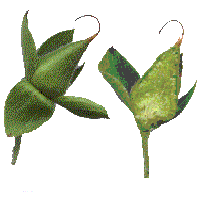
Digitalis (Foxglove). The seedpod is the same size as a ripe pod, but is hard and green. The seeds inside are soft and green. The ripe pod is brown and dry, and ripe seeds are brown and hard.